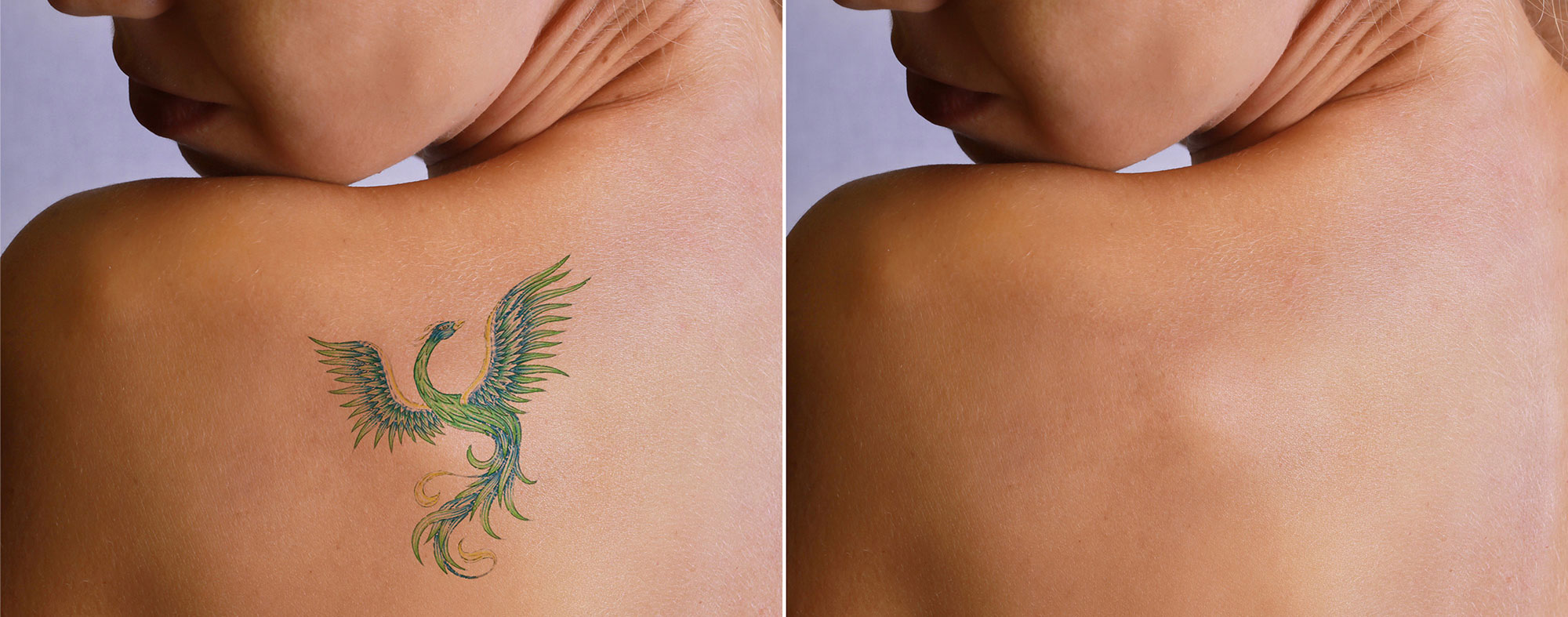Tattoo Removal
Tattoos have fascinated mankind from all cultures and strata of society for centuries. From the ancient Egyptian, Greek, and Roman cultures to the modern society we have today, skin markings have been used to enhance beauty, demonstrate uniqueness, signify belonging, and sometimes to identify, shame, or punish. As more tattoos are being acquired, increasing numbers of people are also seeking their removal. Motivation for tattoo removal includes new jobs or careers, the need to portray a certain image at work or in new social circles, and new, negative feelings towards old tattoos.
How it works:
Quality-switched (QS) lasers have long been the traditional workhorse for the removal of tattoos. By selective photothermolysis, the laser penetrates the top layers of the skin, breaking down the ink. Once the ink particles are smaller, the body’s immune system targets and destroys them using special white blood cells called macrophages. Easier colours to remove include black, blue and red.
Pre-Procedure:
Avoid tanning 6 weeks prior to procedure.
Avoid pre-treatment shaving, waxing and exfoliating.
Avoid smoking to ensure better healing.
Avoid taking aspirin or similar drugs which can cause increased bleeding.
Anesthetic cream will be applied for one hour prior to procedure so ensure adequate time for same.
Eye shield will be used.
Post-Procedure:
Mild pain and discomfort for up to 48 hours post procedure.
Ice packs or painkillers can be used to manage pain.
Slight redness, discoloration, swelling, bleeding may occur, which resolve within few hours after procedure.
Scabbing will occur, which will last for 7-10 days. Avoid picking at scabs.
Repair cream and sun protection must be used.
Over weeks 2-8, gradual fading of the tattoo will occur. The healing time varies greatly among individuals.
Important Points:
Multiple laser treatments are usually required, averaging 5-10 treatments.
Number of sessions depends on the Fitzpatrick skin phototype, location, color, amount of ink used in tattoo, scarring or tissue change, and ink layering.
Time interval between the sessions vary from 6-12 weeks, depending on the tattoo and the skin type.
Risks, albeit uncommon, are present with each procedure. Potential side effects include hematoma, infection and bleeding, hanges in sensation, scarring, allergic reactions, damage to underlying structures, unsatisfactory results that may necessitate additional procedures, skin discoloration such as hypopigmentation and hyperpigmentation, temporary changes in skin texture, rarely, paradoxical darkening of a tattoo may occur.
Pros:
Effective outpatient procedure.
Minimal side effects.
Minimal pain (anesthetic cream is applied one hour prior to procedure).
No surgical incisions and sutures.
Cons:
Effective outpatient procedure.
Might require multiple sessions.
Scarring and changes in skin texture and colour might occur.
Redness, discoloration or pinpoint bleeding often occur post procedure and last for few hours.
